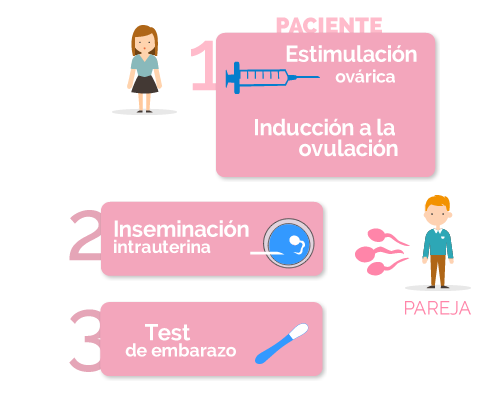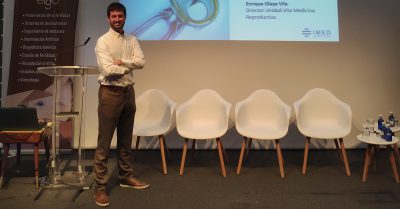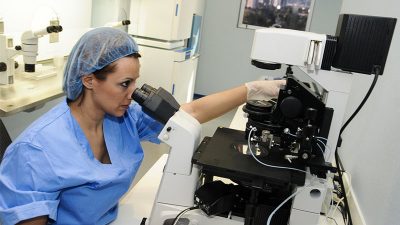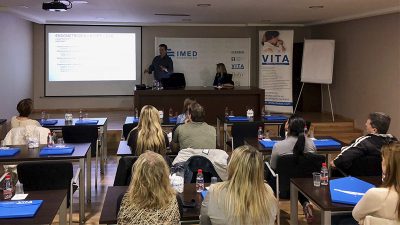Artificial insemination with the partner’s semen

In vitro fertilization (IVF) with the partner’s sperm, also known as intrauterine insemination with the partner’s sperm, is a technique where sperm from the partner is deposited in the woman’s uterus during her ovulation period, with the objective of facilitating pregnancy. It is the simplest assisted reproduction technique.
What does Artificial Insemination with the partner’s semen consist of?
Treatment begins with ovarian stimulation, where a series of hormones similar to those produced by the woman herself (gonadotropins) are used. The stimulation must be gentle and periodically controlled, since if the number of developed follicles is very high, multiple gestations can occur.
Once one or two follicles have reached the appropriate size (18 mm in diameter) the hCG (human Chorionic Gonadotropin) hormone is administered to induce ovulation, which will occur 34-38 hours later and that is when the insemination will take place.
The insemination, itself, will be carried out within the time range in which it is estimated that ovulation will occur. That day, the couple hands in a semen sample to the laboratory. In the laboratory, using washing techniques, the sperm is filtered to separate the motile spermatozoa from the rest.
The selected spermatozoa are inserted into a cannula and injected into the woman’s uterus waiting to achieve fertilization. This procedure is painless, similar to a gynecological examination.
To facilitate embryo implantation, progesterone is administered through the vagina to support the luteal phase.
The pregnancy test will be carried out by means of a blood or urine test 14 days after the insemination. If the patient suffers from bleeding before the test is performed, it is important that she never stops taking the medication and that she seeks advice from the medical team.
Throughout the artificial insemination treatment, her personal assistant will be available at all times to answer any questions she may have and support her in this very special moment.

For whom is this technique indicated?
Artificial Insemination with the partner’s semen is indicated for
- Couples where the woman has ovulatory dysfunctions such as polycystic ovary síndrome (PCOS), anovulation (not releasing an egg each month) or problems in the follicular phase, but an acceptable ovarian reserve, permeable fallopian tubes, and normal quality – or with mild-moderate alterations – of the partner’s semen
- Couples where the woman has mild or moderate endometriosis.
- Couples where the woman suffers from cervical mucus defect.
- Couples where the woman has anatomical alterations, such as stenosis (narrowing of the cervix) or vaginismus.
- Couples where the man cannot deposit the semen in the vagina: sexual impotence, retrograde ejaculation, premature ejaculation.
- Couples with immunological sterility problems, where antibodies are produced in the female reproductive system that destroy spermatozoa.
The requirements for a couple to undergo artificial insemination and have the best chance of success are:
- To check the permeability of the fallopian tubes to ensure the passing of sperm for fertilization to take place, and consecutively for the zygote to reach the uterus.
- To have an ultrasound scan done to rule out possible uterine malformations that could affect the implantation and development of the pregnancy. In addition, to ensure that the ovary is capable of responding to stimulation enabling the retrieval of a minimum of oocytes suitable for the performance of the technique.
- To establish with semen analysis that there is a minimum quality of semen. The couple’s semen sample must meet minimum concentration and/or mobility requirements.
- To ensure that there is no risk of contagion to the partner and/or future baby, ruling out the risk of possible hepatitis C or B, HIV, rubella (german measles), syphilis and toxoplasmosis.
- The age of the woman directly influences the chances of success or failure. The chances of pregnancy using this technique begin to decrease when a woman approximately reaches 36.





